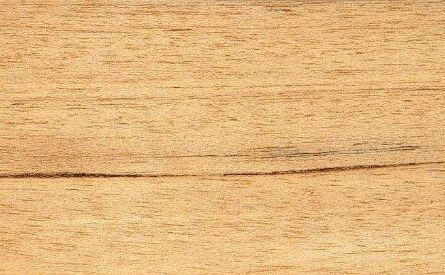CEIBA
Silk Cotton Tree / Ceiba pentandra

Local Names
Distribution & Tree
Wood Appearance
Processing Properties
Strength & Durability
Wood Uses
Ecological & Social Importance
Ceiba is likely a Taino word. The Spanish Conquistadors were impressed by the size of the canoes that the native people in the West Indies and coastal Central and South America made from the ceiba tree. Canoes were hollowed out of tree trunks in a single piece and the largest could carry over 100 men. In Alta Verapaz, the Maya, pre- and post-Conquest, held their councils under the ceiba. The flowers are an important source of nectar and pollen for honey bees and bats, the latter being the primary pollinators of the night-blooming flowers. The seed pod’s fiber is used as an alternative to down as filling in mattresses, pillows, upholstery, and stuffed toys. In Central America, the bark is said to be a diuretic and to stimulate breast milk production and the flowers thought to be a remedy for dizziness and headaches.
| Reference Species | ||||
| Technical Characteristics | Ceiba | Eastern White Pine | Eastern Cotton Wood | |
| Density | kg/m3 | 320 | 400 | 450 |
| Janka Hardness | kgf | 127 | 172 | 195 |
| Bending Stiffness (Modulus of Elasticity) | GPa | 4.1 | 8.6 | 9.5 |
| Bending Strength (Modulus of Rupture) | MPa | 40.0 | 59.3 | 58.6 |
| Crushing Strength | MPa | 21.7 | 33.1 | 33.9 |
| Shrinkage, Radial | % | 2.8% | 2.1% | 3.9% |
| Shrinkage, Tangential | % | 6.4% | 6.1% | 9.2% |
| Shrinkage, Volumetric | % | 10.4% | 8.2% | 13.9% |
| T/R Ratio | 2.3 | 2.9 | 2.4 | |
| Values determined at 12% humidity - Provided for reference only | ||||
|---|---|---|---|---|
DENSITY
JANKA HARDNESS
BENDING STIFFNESS
BENDING STRENGTH
CRUSHING STRENGTH
SHRINKAGE
Values are for reference only and cannot be guaranteed. Wood is a natural material and physical and mechanical properties may vary depending on age, genetics, and other factors. We encourage customers to consult the references provided in the bibliography. For further explanations of wood’s key technical characteristics, an excellent resource is the Wood Database with articles on Density (average dried weight); Janka hardness; Elastic Modulus; Rupture Modulus; Crushing Strength; Radial, Tangential and Volumetric Shrinkage.






